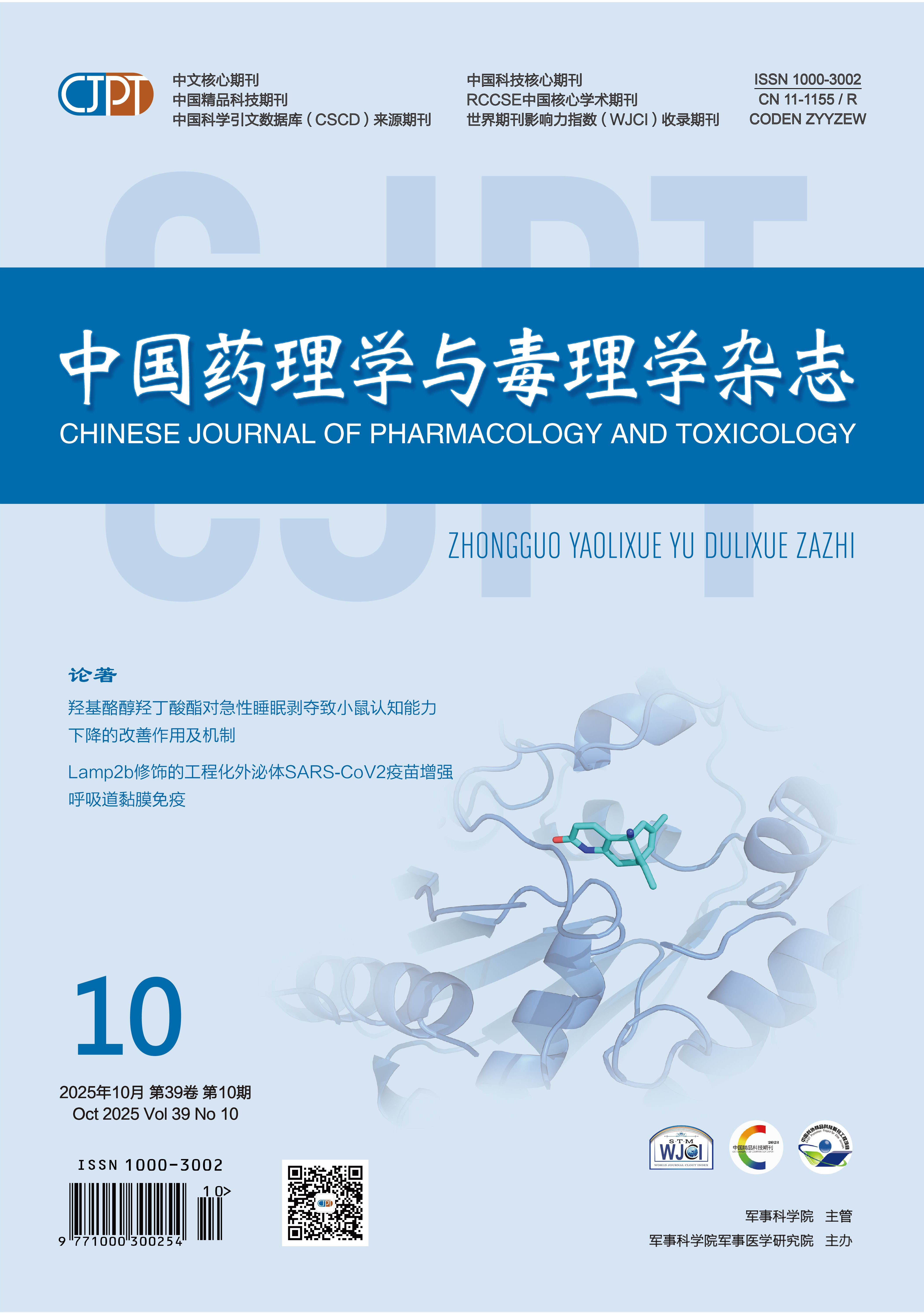WANG Jianyu, LIN Ruizhi, ZHAO Xinran, WEI Yajing, WANG Lin, ZHAO Xiuli, YANG Jun, WANG Yongan
OBJECTIVE To investigate the acute lung injury effects of pulmonary phospholipids and their phospholipase A2 (PLA2) decomposition products—lysophospholipids and fatty acids—on mice. METHODS Mice were randomly assigned to the following groups: ① solvent control (PBS) and PLA2; ② solvent control and glycerol phospholipid groups: 1, 2-dioleoyl-sn-glycero-3-phosphoserine (DOPS), 1, 2-dipalmitoyl-sn-glycero-3-phosphoserine (DPPS), 1, 2-dioleoyl-sn-glycero-3-phosphoethanolamine (DOPE), 1, 2-dipalmitoyl-sn-glycero-3-phosphoethanolamine (DPPE), 1, 2-dipalmitoyl-sn-glycero-3-phosphocholine (DPPC), and 1-stearoyl-2-oleoyl-sn-glycero-3-phosphocholine (SOPC); ③ solvent control and fatty acid groups: palmitic acid (PA), oleic acid; ④ solvent control and lysophospholipid groups: 1-oleoyl-2-hydroxy-sn-glycero-3-phosphoserine (18:1 LysoPS), 1-stearoyl-sn-glycero-3-phosphoserine (18:0 LysoPS), 1-palmitoyl-sn-glycero-3-phosphoserine (16:0 LysoPS), 1-palmitoyl-sn-glycero-3-phosphoethanolamine (16:0 LysoPE), 1-palmitoyl-sn-glycero-3-phosphocholine (16:0 LysoPC); ⑤ solvent control, PLA2, DPPC, PA, 16:0 LysoPC, 16:0 LysoPS, and 18:1 LysoPS. Following anesthesia, mice were administered nebulized PBS in the solvent control group, 2.1 μg·kg-1 PLA2 in PBS in the PLA2 group and 2.5 mg·kg-1 of the corresponding substance in PBS in other experimental groups. For group ①, survival times were recorded and survival curves were plotted. At 1 h post-treatment, lung
tissues from groups ①②③④ were collected, photographed to obtain white light images, and subjected to HE staining to assess histopathological changes and pathological scoring. At 2 hours post-treatment, pulmonary blood flow in group ⑤ was assessed using laser speckle contrast imaging, arterial blood gas was analyzed with a blood gas analyzer, and lung function was evaluated using whole-body plethysmography. At 6 hours post-treatment, blood cells from group ⑤ were analyzed using an automated hematology analyzer. RESULTS Compared with the solvent control group, severe pathological changes were observed in lung tissues of the PLA2 group, accompanied by extensive inflammatory infiltration and interstitial thickening, with all mice succumbing within 240 min. In mice treated with glycerol phospholipids, alveolar structures remained clear, alveolar walls were intact and continuous, and alveolar spaces were translucent, with only occasional minor inflammatory cell infiltration in the septa. No significant pathological alterations were detected in the fatty acid groups. Minor inflammatory cell infiltration was seen in the 16:0 LysoPE and 16:0 LysoPC groups. However, such pathological changes as patchy hemorrhage, alveolar interstitial edema, increased alveolar wall thickness, and elevated neutrophil counts were observed in the 18:1 LysoPS, 18:0 LysoPS, and 16:0 LysoPS groups. Pathological scores based on HE staining were significantly increased in the 16:0 LysoPS and 18:1 LysoPS groups compared with the solvent control. The percentage of the lung tissue injury area was also markedly higher in the 16:0 LysoPS group. A significant decrease in the mean fluorescence intensity of blood flow was observed in the 16:0 LysoPS group. Arterial partial pressure of oxygen (PO2) was significantly reduced in the PLA2 group, while arterial partial pressure of carbon dioxide (PCO2) was markedly elevated in the 16:0 LysoPS and 18:1 LysoPS groups. Lung function tests revealed that the 16:0 LysoPS group exhibited significant increases in expiratory time, end-expiratory pressure, and enhanced pause, in contrast to significant decreases in tidal volume, expired volume, and minute volume. The 18:1 LysoPS group also exhibited a significant decline in minute volume. No significant changes in inflammatory cell concentrations were detected in blood, with the exception of neutrophils in the 16:0 LysoPS group, which showed a significant but physiologically normal increase. CONCLUSION Pulmonary phospholipids and their PLA2-derived fatty acid metabolites do not induce severe lung injury in mice while the lysophospholipid metabolites, particularly lysophosphatidylserine, are found to cause significant lung injury.
